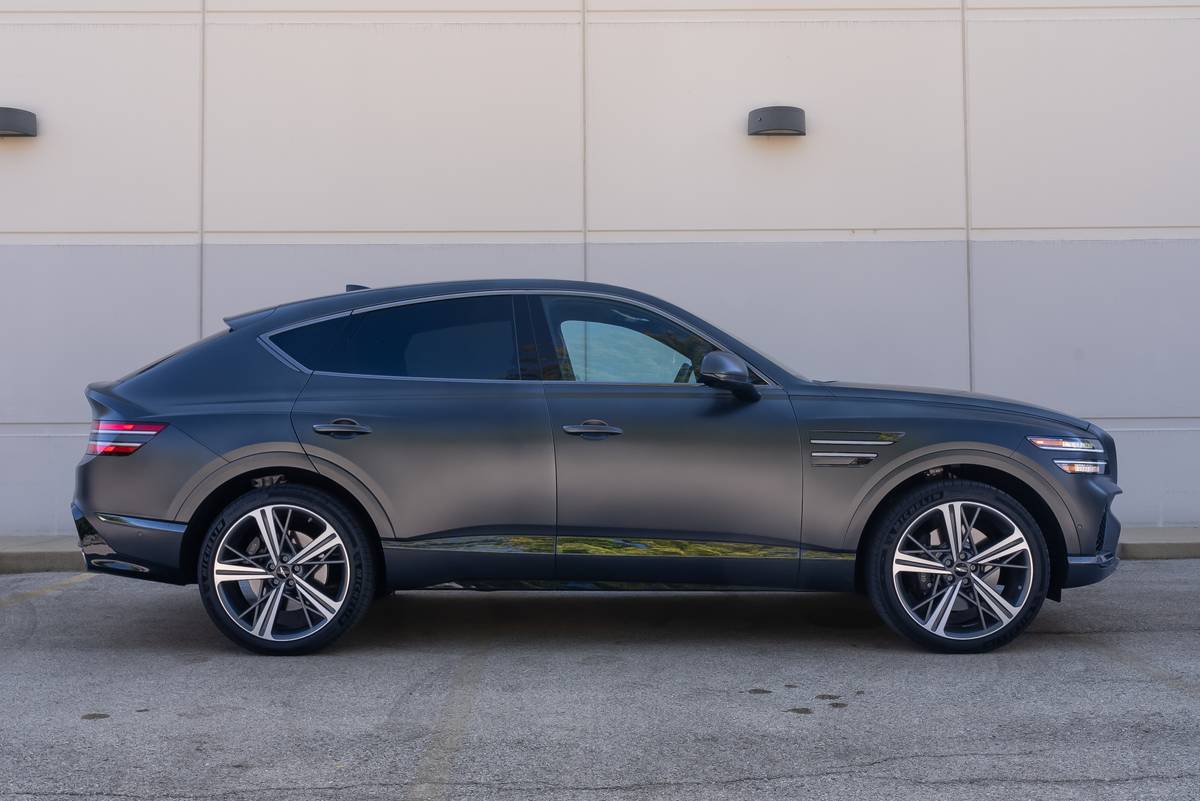AZCentral.com's view
The best part is a Hemi
Dodge Durango grows to full-size for 2004, with muscular styling and a Hemi V-8 engine.
Dodge Durango moves up to big-truck country for 2004, growing into a full-size sport utility that competes directly with Chevrolet Tahoe and Ford Expedition.
All new from the chassis up, Durango takes on the broad-shouldered style of the Ram pickups, although it loses some of the sporty flare of its former self.
For muscle-car enthusiasts, the big news (as the ads proclaim): It has a Hemi engine. As an option, anyway. But the significance of that four-letter word may be lost on non-car enthusiasts, who might well ask: What the heck is a Hemi?
Technically, Hemi goes back more than 50 years to when Chrysler introduced its Firedome V-8 engine, which incorporated several new features. Chief among these was a combustion chamber of hemispherical design, thus the name Hemi, which was used for the first time in a passenger-car engine.
The advantages of the Hemi-head were better efficiency of air movement, valve placement and spark-plug location, all of which conspire for a greater output of roaring horsepower.
Used extensively as racing engines, Hemis today are best remembered as the huge, snorting powerplants that spun the back tires of ‘Cudas, Challengers, Roadrunners and other Chrysler muscle cars of the late ’60s and early ’70s. These cars now are frightfully valuable, as seen last January at the Barrett-Jackson Collector Car Auction.
The rebirth of the old-style Hemi flies in the face of a generation of modern overhead-cam V-8 engines. But it sure does pull.
What it is
An all-new version of the Durango SUV, now a chunky heavyweight with loads of capability.
Performance
Fifty percent of 2004 Durango buyers have sprung $895 for the 5.7-liter Magnum Hemi instead of a 3.7-liter V-6 or 4.7-liter overhead-cam V-8. Small wonder. Aside from the mythic appeal, the Hemi shows plenty of muscle, enough for this 5,000-pound behemoth to roar away from stoplights and up freeway ramps like an angry bulldog.
Packing 335 horsepower at 5,400 rpm and 370 pound-feet of torque at 4,200 rpm, the V-8 feels healthy and strong, emitting a baritone exhaust note that should thrill the muscle-car guys.
But once again, muscle is never free, and the Durango is rated at a paltry 13 miles per gallon city and 18 highway. With regular topping two bucks a gallon, those figures might give one pause.
Towing for the test truck, a four-wheel-drive model at 3.92 rear-axle ratio, was 8,700 pounds.
Drivability
As big and bulky as it is, Durango is a responsive truck with good steering and brakes and decent maneuverability. Highway cruising is solid and smooth enough that you have to watch your speed. Aside from the fuel-mileage, Durango feels ready to drive cross-country, along with side trips up a few rocky trails to the back country. I didn’t have a chance to take this beast off highway, but it has the credentials for rough four-wheeling.
The four-wheel-drive system is the heavy-duty type, basically rear-wheel drive with a front-drive transfer case. Controls are electronic via push buttons, including four-wheel low range. A new traction control system, effective both on and off pavement, is optional. Antilock brakes come standard and side-curtain airbags are optional.
There was some wind roar in the test truck, which I think was coming from the sunroof.
Durango has a new chassis that’s unique to this truck. The SUV feels tight and solid, with a firm but compliant ride. Handling is decidedly trucklike but not unwieldy. Some SUVs have switched to independent rear suspension, such as Ford Expedition, but Durango continues with a solid rear axle.
The windshield pillars are really thick, enough so that I thought vision was compromised. Most urrent trucks have thick pillars for safety and body stiffness, and usually that doesn’t bother me. It did on the Durango.
Styling
The front aspect goes bold, with a huge grille and big-rig styling similar to the full-size Dodge Ram pickup. The fenders are widely flared, making the behemoth look even bigger.
Interior
Conservative but richly upgraded from the former Durango, which was knocked for its utilitarian starkness. Cubbies, bins and cupholders are plentiful, and the third-row seat folds easily to create a broad, flat deck.
With the third seat deployed, there’s seating for seven. The front seats are roomy, but the middle seat is tight on legroom and the third seat can be used only by kids or small adults.
Pricing
Base price for the rear-drive, V-6-powered base model is a bargain at about $26,000.
The four-wheel-drive V-8 SLT model started at $30,945, with the most significant upgrade being the Hemi engine at $895.
Other options included a preferred package with the upgraded audio, overhead console, security system, rear-seat reading lamps, cast aluminum wheels and other convenience features, $1,515; power sunroof, $800; trailer towing group, $525; running boards, $395; Sirius radio, $325; off-road tries, $305; traction control, $300; premium speakers with subwoofer, $225; electronic transfer case, $195; 3.92 rear axle ratio, $40; and shipping, $645.
The total of $37,110 is not cheap, but represents good value for a lot of truck.
Bottom line
Dodge joins the big-SUV cadre with a solid upgrade of Durango.
Latest news

10 Biggest News Stories of the Week: Jeep Wrangler Rides on Audi E-Tron GT, Chrysler Pacifica Hybrid


